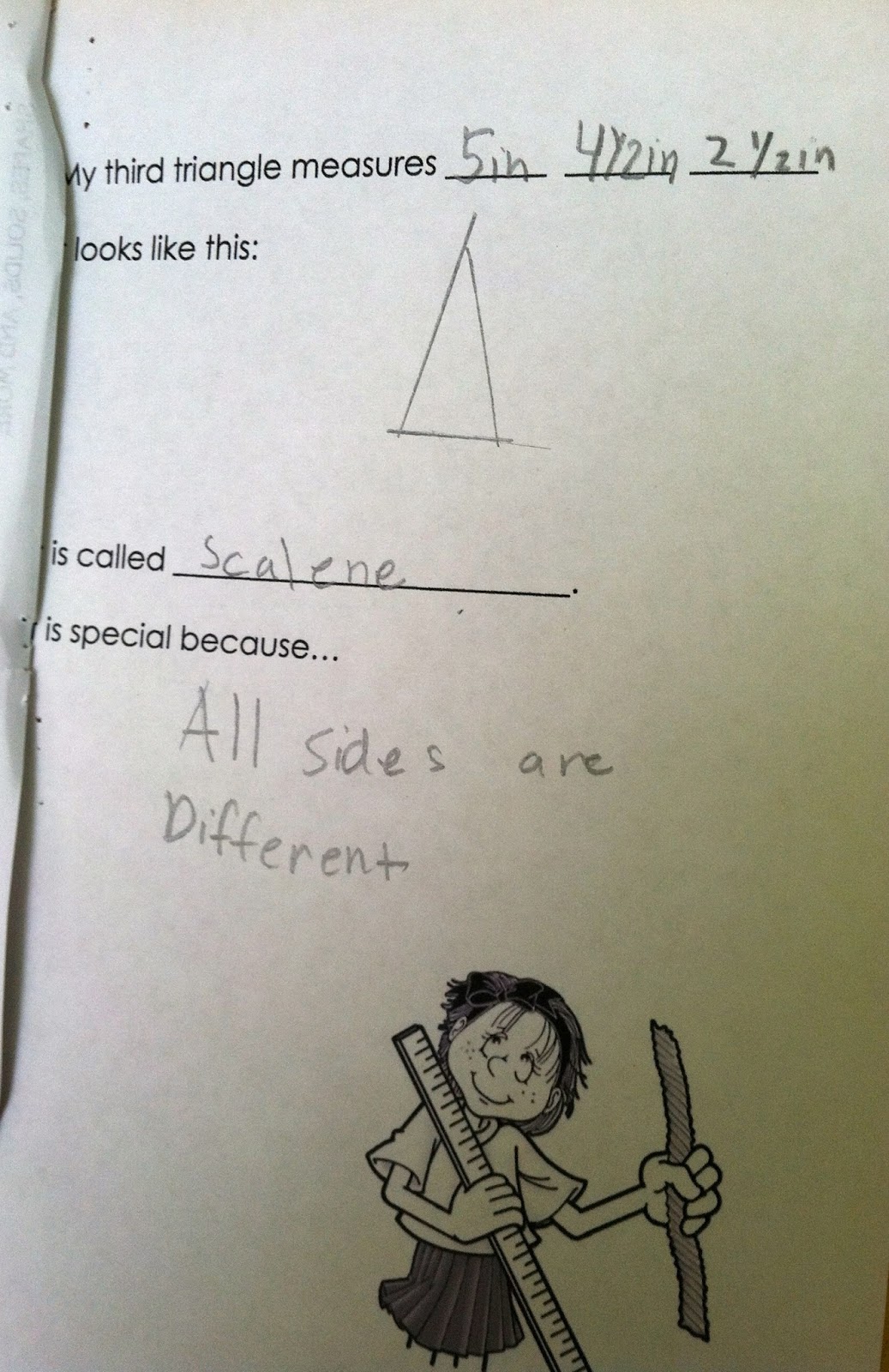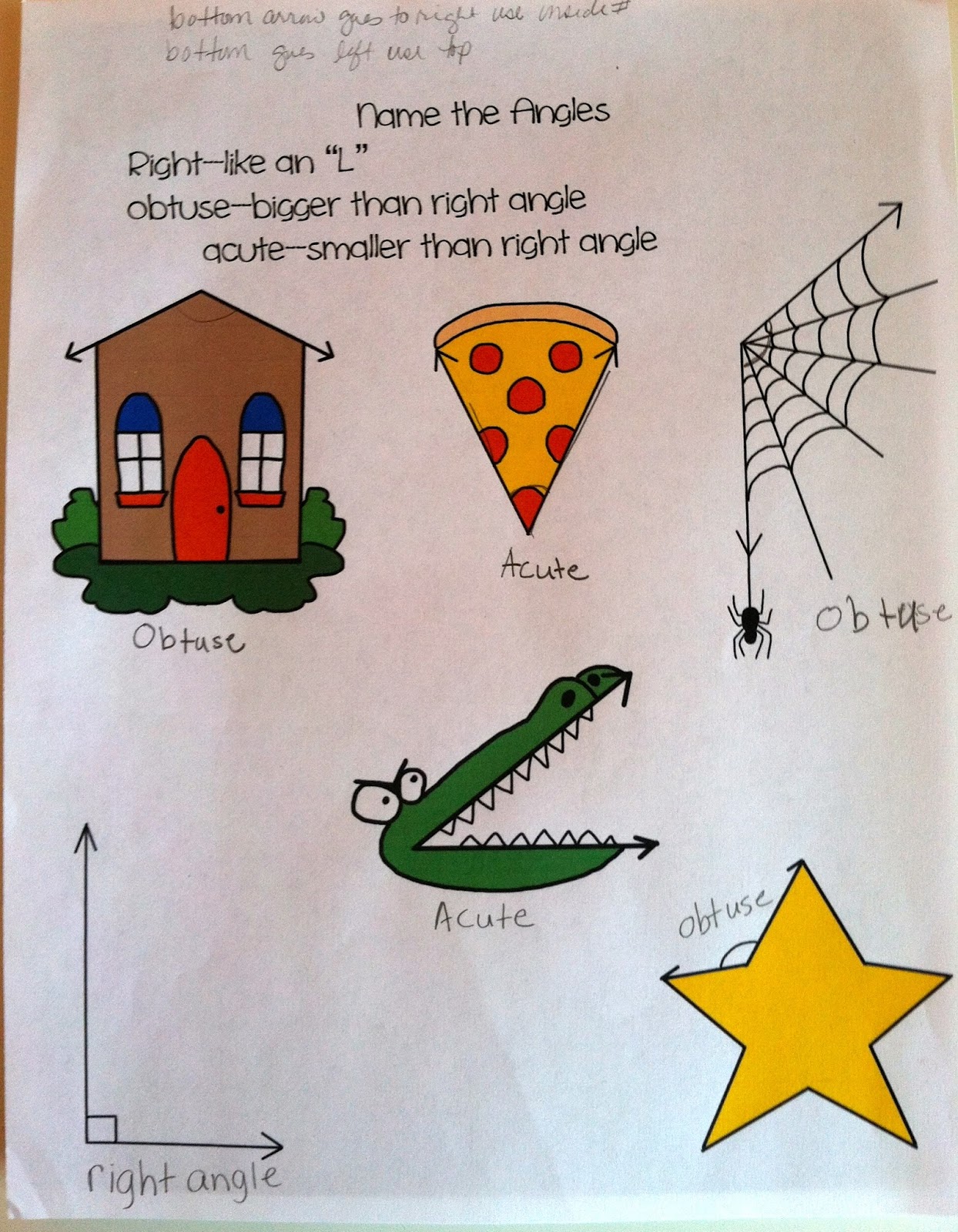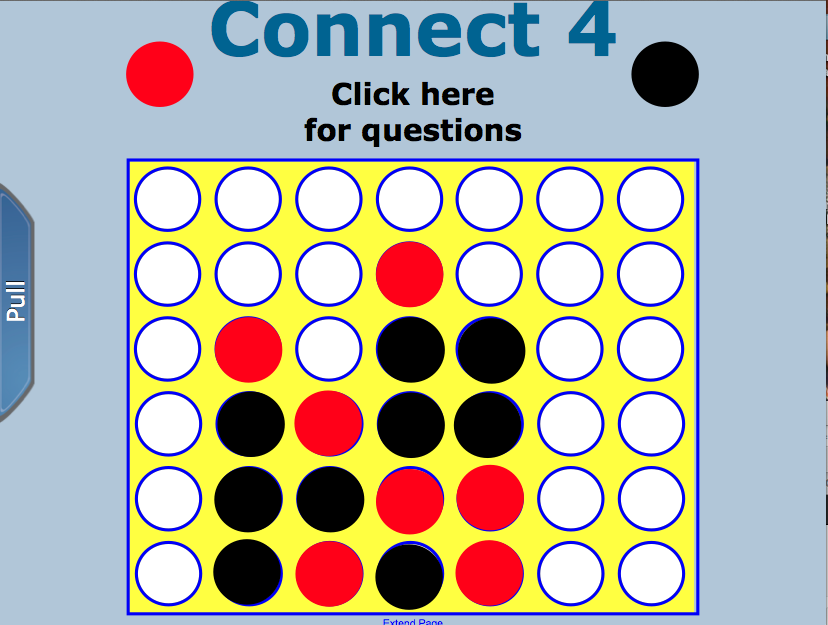Friday, July 12, 2013
Thanks to all of you who previewed and downloaded our newest activities on TpT. We hope you find them useful. Monday we will start writing a lesson plan for
Exploring Space With An Astronaut by Patricia J. Murphy. This story will go along with our Astronomy science unit that we will be doing in the fall.
During the past three math tutoring sessions, Kim and her student have been working with triangles and angles. Kim found a great
Aims lesson called Tasty Triangles. The objective of this lesson is to introduce students to equilateral, isosceles, and scalene triangles. Licorice twists were used for this activity. First, Kim gave the student three pieces of licorice and asked her to make a triangle. They discussed what they noticed about the triangle--all sides were equal lengths. We called that an equilateral triangle. Then, the student took a bite of one licorice piece and made another triangle. We noticed only two sides of the triangle were the same size--an isosceles triangle. Finally she took a bite of another side of the triangle and noticed none of the sides were equal in length--a scalene triangle. The student completed the booklet to help her remember the three types of triangles.







Kim and her student also learned about right, acute, obtuse and straight angles. They did activities from Aims
Angle Aerobics,
Angles More or Less, and
Angle Hunt. They were so much fun, the student wanted to do a Wixi project to show what she learned.
 |
Pictures came from Altteacher on TpT.
|
Kim also introduced her student to Smart Cards so she could practice her mental addition skills. They are super fun and the work like "magic." One person thinks of a number between 1-31. They point to all the cards that their number appears on. The student keeps track of the cards and mentally adds the first numbers on each of the cards that has the target number. The sum should be the number the first person was thinking about.
For example, Kim thinks of the number 11. She points to the blue, pink, and green cards because 11 only appears on those cards. The student (who does not know the number Kim is thinking about) adds the first numbers on the blue card, pink card and green card-- 1 + 2 + 8=11. The student says "11?" and Kim says yes, that is the number she is thinking of. It works every time as long as the adding is correct. This activity came from Marilyn Burns' book The I Hate Mathematics Book.
After reading
Igniting A Passion For Reading, by Steven L. Layne, we have been inspired to begin a new program in our second-grade classroom. It is called "Newspaper Day." One day a month our students will read newspaper articles, written for students, at the online site called
Tween Tribune . The great thing about this site is that the articles are written at different reading levels so the students can choose a level that they are comfortable with. They can also add comments to articles they have read and read other students' comments. Newspaper Day will occur once a month during our Shared Reading block for about 45 minutes. We want this to feel differently than our other reading activities. We want to create a casual and pleasurable environment where students are reading, writing, and discussing about articles of their own choosing. The environment would be similar to adults reading the Sunday paper and talking about it with someone in their family. During this time we hope to have parent volunteers bring in healthy snacks and drinks for the kids. The purpose of starting this program with our second graders is to promote a love of reading, develop their comprehension of nonfiction texts, and promote peer discussions around a specific topic. This program will meet various Informational Text and Speaking and Listening Common Core State Standards (CCSS).

 |
| Permission slip to comment to the public |
 |
| Have parents volunteer to bring in snacks. |
We read another article from the International Reading Association that gave us a lot to think about. It is titled, "
The Common Core's Stair Case to Text Complexity: Getting the Size of the First Step Right" by Elfrieda H. Hiebert. At first we thought it contradicted the article we read last week by Timothy Shanahan, but as we read it a second time we could see a connection between the two articles. The main thing we took away from this article is that we need to really be aware of who our readers are and choose reading material that meets their needs. If they are struggling readers putting them at a frustration level book is not going to be effective; however, more able readers most likely would be able to handle reading material that that is just above their instructional reading level. In either situation we need to make informed professional decisions for our students.
Have a great week.
Kim and Anne



































